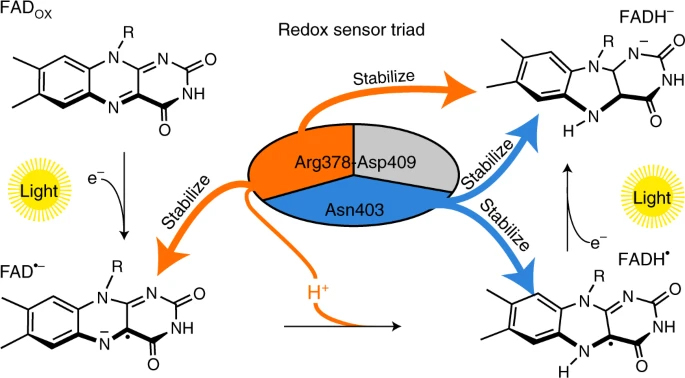
 中央研究院 生物化學研究所
中央研究院 生物化學研究所
Flavin coenzymes are universally found in biological redox reactions. DNA photolyases, with their flavin chromophore (FAD), utilize blue light for DNA repair and photoreduction. The latter process involves two single-electron transfers to FAD with an intermittent protonation step to prime the enzyme active for DNA repair. Here we use time-resolved serial femtosecond X-ray crystallography to describe how light-driven electron transfers trigger subsequent nanosecond-to-microsecond entanglement between FAD and its Asn/Arg-Asp redox sensor triad. We found that this key feature within the photolyase-cryptochrome family regulates FAD re-hybridization and protonation. After first electron transfer, the FAD•- isoalloxazine ring twists strongly when the arginine closes in to stabilize the negative charge. Subsequent breakage of the arginine-aspartate salt bridge allows proton transfer from arginine to FAD•-. Our molecular videos demonstrate how the protein environment of redox cofactors organizes multiple electron/proton transfer events in an ordered fashion, which could be applicable to other redox systems such as photosynthesis.
